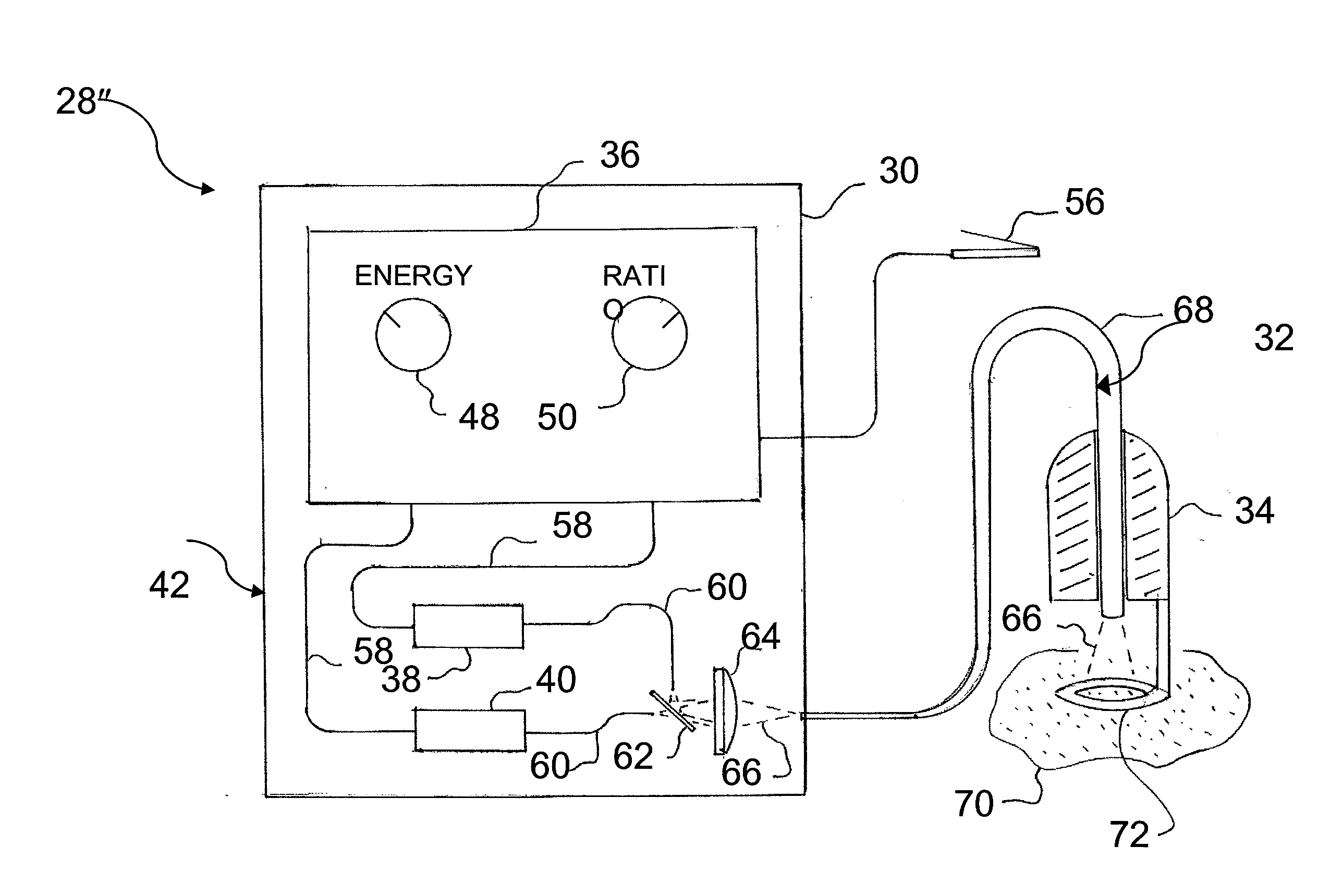Light beam wavelength mixing for treating various dermatologic conditions
a technology of light beam and dermatologic conditions, applied in the field of skin photorejuvenation, can solve the problems of hair follicle damage, healing process cannot successfully repair hair follicle, etc., and achieve the effect of reducing the amount of required cooling, low safe effective fluence, and high pain
- Summary
- Abstract
- Description
- Claims
- Application Information
AI Technical Summary
Benefits of technology
Problems solved by technology
Method used
Image
Examples
Embodiment Construction
[0050]Wavelengths of the electromagnetic spectrum in the range from 525 nm to 1,064 nm can be used for skin treatments (e.g., hair removal because the level of optical absorption by melanin pigment is optimum or photorejuvenation including treatment of vascular lesions, wrinkle, skin texture, and tightening). Wavelengths from about 750 nm to about 1,064 nm can be particularly effective because the level of optical absorption by melanin pigment is optimum. At shorter wavelengths, most of the light is absorbed in the epidermis leading to over heating of the epidermis and / or insufficient light reaching the bulb / bulge at the bottom of the follicle. At longer wavelengths, not enough light is absorbed by the melanin pigment to be effective at safe dosage levels.
[0051]The appropriate treatment fluence depends on the wavelength of the light, the size of the treatment spot, and the amount of melanin pigment in the skin and in the hair.
[0052]Melanin is located in the epidermis, the hair bulb ...
PUM
 Login to View More
Login to View More Abstract
Description
Claims
Application Information
 Login to View More
Login to View More - R&D
- Intellectual Property
- Life Sciences
- Materials
- Tech Scout
- Unparalleled Data Quality
- Higher Quality Content
- 60% Fewer Hallucinations
Browse by: Latest US Patents, China's latest patents, Technical Efficacy Thesaurus, Application Domain, Technology Topic, Popular Technical Reports.
© 2025 PatSnap. All rights reserved.Legal|Privacy policy|Modern Slavery Act Transparency Statement|Sitemap|About US| Contact US: help@patsnap.com



